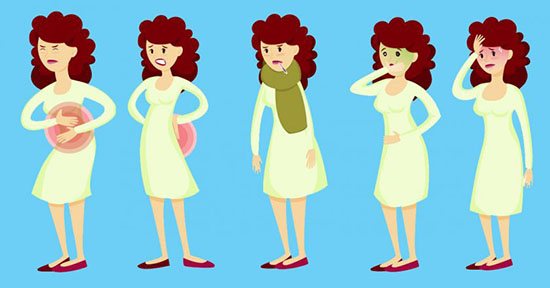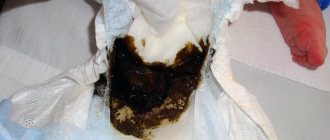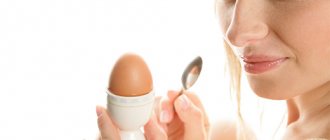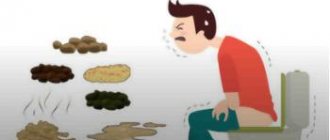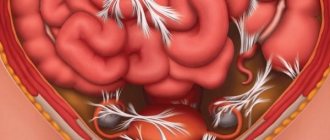Causes of yellow stool in adults
Just like green stools can be caused by increased consumption of green foods, yellow stools can be caused by increased consumption of foods containing yellow or orange dyes, which are carotenes. They occur, for example, in carrots. This phenomenon, of course, is not dangerous and short-lived.
Otherwise, yellow stool is not normal. Let us remember that when we have yellow stool or light-colored stool, it may mean that our stomach, liver or colon has been attacked by a serious disease. Yellow stool can signal:
When yellow stools also smell very bad, with mucus in them, the cause may be a malabsorption of fats, that is, problems with the thyroid gland. In addition to inflammatory diseases, symptoms also accompany celiac disease or cystic fibrosis.
- Celiac disease, that is, gluten intolerance, should not give obvious symptoms in early childhood. Often diagnosed only in adults, based on a small intestinal biopsy performed for nonspecific symptoms (malnutrition, colic, excessive gas, and even behavioral disturbances).
- Cystic fibrosis is diagnosed in early childhood (and more and more often, fortunately, already in newborns, thanks to examination), due to very serious diseases of the digestive system (for example, chronic diarrhea), as well as breathing (bronchitis, sinusitis, symptoms, close to asthma). It happens, however, that the doctor focuses on symptoms and diseases that are only a consequence of this disease.
Sudden yellow diarrhea often indicates a bacterial infection of the intestines.
Yellow stools, like gray stools, are also accompanied by liver diseases and may be associated with improper secretion of bile.
Norm and deviations
Normally, the color of human stool can range from light brown to dark brown. This is due to the production of a special enzyme involved in the processes of breakdown and digestion of food, and the nature of the food consumed.
White or gray stool
Light-colored feces, with shades of white or gray, indicate improper digestion of foods containing a protein component: potatoes, rice, dairy products (protein in feces). Also, whitish stools can be observed when taking medications (antacids, calcium), barium - for diagnosing stomach diseases, viral hepatitis.
Also, stool of these tones is observed in diseases of the liver and gallbladder, when bile in full is unable to enter the stomach and duodenum. Feces lose their normal color as a result of the loss of pigment - stercobilin.
Very light stool - the main reasons
Brown stools are the result of bile salts secreted by the liver. If their production decreases, the stool is light in color. Another reason may be taking medications containing aluminum hydroxide. The stool may be temporarily light-colored after medical examination using barium sulfate.
Light-colored stools may be clear or gray, float, and may have a foul odor caused by fat in the stool.
Hard stools occur when the contents of food consumed through the digestive tract slow down, which is typical in the case of the passage. This may be the result of a lack of fiber in the diet and lack of fluids.
And loose stools are caused by accelerated consumption of food through the intestines, characteristic of diarrhea.
Treatment of light yellow stool in adults
A gastroenterologist deals with diseases of the digestive system. If there is mucus in the stool, bloating, gas and constipation, then you should drink more water and eat foods that help remove mucus. Products that create a smooth film on the intestinal mucosa, such as flaxseed, are soaked overnight in water before consumption.
In order to prescribe effective treatment, you must first find out why the stool is light yellow in color in an adult, establishing the true reasons by taking a bacterial culture test.
- flour dishes;
- carbonated products;
- fried and smoked.
You should follow a diet that includes only fresh and healthy foods. Sometimes dairy products can cause bloating and heaviness in the stomach. Therefore, their consumption should be limited.
For stomach pain, you can brew chamomile. It should be taken 3 times a day. The herb has antibacterial and antispasmodic properties.
If you experience pain in the abdominal area during light yellow stool, you can take no-shpa or any painkiller.
Frequent light-colored stool may indicate the presence of a bacterial component. In this case, you should definitely consult a qualified specialist.
An unexpected change in the color and character of stool in both an adult and a child in most cases causes concern. Moreover, if in some situations a changed color may indicate the consumption of certain products, then sometimes it can also indicate the presence of certain diseases in the body.
Often the cause of health concern in adults is the appearance of yellow stool. In this case, panic is not without meaning, because in some situations such a symptom may actually indicate the development of pathological processes in the body.
Orange feces as a symptom of infectious diseases
If the unusual orange color of the stool is accompanied by symptoms of general intoxication of the body, increasing signs of dehydration, fever, repeated loose stools, vomiting, abdominal pain of varying intensity - most likely, infection has occurred with dangerous pathogenic microorganisms of dysentery, escherichiosis or rotavirus infection. One sign of these intestinal infections may be orange-colored stool.
In this situation, you cannot hesitate; you need to urgently consult a doctor for help.
Causes of yellow stool in adults
In most cases, bilirubin is responsible for the appearance of yellow stool. Normally, this element promotes the release of stercobilin, which gives human feces the usual reddish-brown color.
If the body does not produce enough of this substance, feces lose their color and an unpleasant yellow tint may appear.
Under such circumstances, liver disease such as hepatitis or cirrhosis is usually suspected.
However, with such diseases, in most cases, the feces acquire a light yellow tint, and after a while they finally lose their color and become white or slightly grayish. If an adult has bright yellow stool, most likely we are talking about completely different ailments.
As a rule, yellow stool in an adult is caused by the following reasons:
- the most banal and harmless reason is eating large amounts of fresh milk;
- disruption of the digestion of carbohydrates or fermentative dyspepsia;
- pancreatic insufficiency;
- poor digestion of food in the large intestine.
All these reasons are not associated with serious diseases of the human body, but in some cases require treatment under the supervision of a gastroenterologist. If diarrhea is added to the unusual color of the stool, most likely we can talk about the presence of rotavirus infection.
In addition, the following factors can cause loose yellow stool in an adult:
- diabetes mellitus and other thyroid disorders;
- hormonal imbalance in women associated with the onset of menopause, pregnancy and other reasons;
- intestinal upset caused by long-term use of antibiotics or other medications;
- severe nervous tension, severe stress, excessive anxiety, pathological depression and other neurological problems;
- Also, periodic yellow diarrhea can occur in the presence of chronic ailments of the digestive tract, for example, stomach ulcers, gastritis, pancreatitis, and so on. If at the same time the processes of rotting and fermentation of the food consumed are actively occurring in the body, the feces may acquire a yellow-green tint;
- lack of bile salt in the body;
- rehabilitation period after surgery on the gastrointestinal tract.
All of the above reasons can cause a change in the color of an adult's stool from light yellow to yellow-green. Despite the fact that some of these factors do not cause any particular harm to the body, and stool independently acquires its usual color within a few days, in some cases the help of a specialist may be required.
Disorders of the liver and pancreas
Pathologies of the pancreas, accompanied by impaired enzyme production, lead to orange diarrhea in a person.
Changes in the color of feces are caused by the following diseases:
- Pancreatitis . With pancreatitis, the pancreas does not produce enough enzymes. This leads to disruption of the digestive processes and the appearance of feces of an unnatural color, diluting the stool in an adult, staining the feces orange or yellow
- Cancer . With this pathology, the patient’s stool is unstable, and there is either constipation or diarrhea. Stool color: from red-orange to colorless.
[adsp-pro-3]
Liver diseases accompanied by impaired outflow or processing of bile can also cause changes in stool color. Liquid orange stool is one of the symptoms of the following pathologies:
- Acute and chronic hepatitis . A feeling of heaviness in the right side of the abdomen, stabbing pain and frequent diarrhea are symptoms of the disease.
- Blockage of the biliary tract . The cause of impaired bile secretion may be stones, sand in the ducts, or inflammatory processes.
- Toxic reactions to taking medications, poisoning . With these pathologies, the number of red blood cells decreases, as they disintegrate and there is an increase in leukocytes in the blood.
Due to the increased breakdown of red blood cells, the level of free bilirubin in the blood increases in a person. An increase in the level of direct bilirubin in the blood leads to the development of jaundice. In this case, bile pigments, the appearance of which is associated with a violation of the processing of bilirubin by the liver, can be observed in both urine and feces.
Important! If a child’s orange liquid stool does not depend on nutrition, the baby complains of severe abdominal pain or cries for no reason, parents should be wary. Since such signs may indicate a problem with the liver or pancreas, you should consult a doctor as soon as possible.
When should you see a doctor to treat yellow stool in an adult?
Treatment for yellow stool directly depends on the reason for the change in color.
- Of course, first you should adjust your diet and completely eliminate milk and dairy products from it for a while.
- Also, if possible, you should stop taking all medications for at least a few days to see how your stool reacts.
- If the situation does not change within a week, you should consult a doctor for a detailed examination.
A qualified doctor will ask you to take the necessary tests and, based on their results, will identify the true cause of yellow stool in an adult and prescribe appropriate treatment.
In addition, if bright yellow stool is accompanied by persistent loose stools, fever, nausea and vomiting, general weakness, malaise and excessive drowsiness, you should seek medical help immediately.
If such symptoms are present, it can be assumed that an infectious process is developing in the body, as well as severe inflammation in the intestines, stomach or gall bladder.
All these conditions can be very dangerous for humans, as they can provoke severe complications, including death. Don't ignore the signals your body gives you if you want to stay alive and healthy.
The materials posted on this page are informational in nature and intended for educational purposes. Site visitors should not use them as medical advice. Determining the diagnosis and choosing a treatment method remains the exclusive prerogative of your attending physician.
Similar articles
Lipomas (popularly called wen) are benign tumors located directly under the skin and consisting of adipose tissue.…
Children are the most fragile and unprotected creatures from external factors. Any parent who sees a rash on their child’s face or body will raise the alarm. Papilloma in...
Today, the problem of immunodeficiency in people is very relevant. Every day there are more and more diseases that are viral in nature. For similar diseases...
Of course, parents pay a lot of attention to their children and care about their health. If any spot appears on a child’s body, they notice immediately. But…
You don’t even need to be a qualified doctor to be able to determine the health status of any person by his appearance. But at the same time there are...
An unusual color of stool can alert a person who cares about their health and become a reason to consult a doctor. The first assumption when yellow stool appears is that there is a problem with the liver. The dark yellow color of feces usually does not bother you, but the light yellow color of feces is most often a sign of trouble in the gastrointestinal tract.
The normal composition of the solid fraction of feces is:
- 30% - undigested food;
- 5% - protein.
30% - bacteria;
15% - inorganic substances;
The color of stool depends on the number of bacteria present in the human body at the time of stool formation.
How does acidity affect feces?
Irritation of the gastric mucosa provokes malfunctions of the digestive glands. If the secretion of gastric juice increases, then the patient experiences increased acidity; when the activity of the glands decreases, they produce less gastric juice and this manifests itself in a decrease in acidity. These two types of gastritis have different manifestations.
Increased
Often a person feels severe pain in the side, which can only be relieved after taking painkillers. For spasms, a hot heating pad can be used.
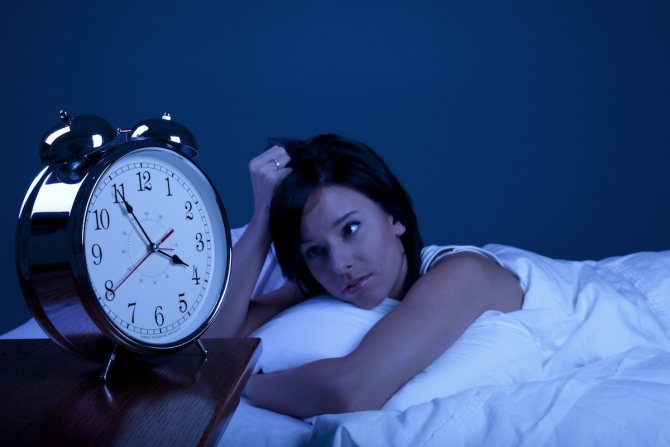
Pain in the stomach area occurs immediately after eating, sometimes accompanied by nausea and vomiting. In rare cases, the patient experiences heartburn. They are characterized by problems with sleep and appetite. People with high acid gastritis are irritable, easily tired and often nervous.
A high level of acid affects the excretion of feces and most often this is expressed in constipation; in some cases, the interval between walking “in a big way” can be a week. Such long-term abstinence leads to poisoning of the body with toxins, which leads to problems with the skin, on which pimples and acne appear, and it acquires an earthy tint.
Reduced
This state of affairs is fraught with poor digestion of food. The stomach cannot cope with its function and large pieces of food enter the intestines, which threatens diarrhea. The lack of the proper amount of hydrochloric acid leads to the appearance of harmful bacteria, they provoke the processes of rotting and fermentation, and an unpleasant odor appears in the mouth.
Reduced acidity affects the quality of stool, when it is constantly liquid, which causes dehydration of the body. Treatment of gastritis is carried out not only with medication, but also with the help of diet, be sure to drink plenty of water and herbal decoctions. Therapy is complicated by the fact that in this case the beneficial substances supplied with food are more difficult to absorb into the blood, the person begins to suffer from excess weight, his health worsens and this affects the functioning of all vital systems of the body.
As a result, the patient is in a bad mood, irritated by trivial things, he develops apathy for many previously familiar activities, his hair begins to fall out, he feels heaviness in the stomach, and there are rashes on the skin. There are no sharp pains, but sometimes dull pain appears in the upper abdomen or near the chest, which can occur after overeating.
Factors influencing the appearance of yellow stool
Stercobilin, a derivative of bilirubin, gives stool a typical red-brown hue. If there is not enough stercobilin in the body, the stool becomes yellow. The main reason for low stercobilin levels is a deficiency of bilirubin due to stool passing too quickly through the intestines or due to too much feces. Bilirubin is produced in the liver as a result of the conversion of hemoglobin, which moves oxygen from the blood to the internal organs. If pathological processes occur in the liver, much less is produced than normal.
Factors influencing changes in stool color:
- Liver diseases.
Liver diseases such as cirrhosis and hepatitis (as well as gallbladder disorders) can reduce the amount of bile salts produced in the body. The combination of yellow stool with a change in its consistency is a sign of a deficiency of bile salts in the body, infection, or impaired liver function.
A yellowish stool can also be caused by a virus, autoimmune or. Most often these changes are caused by a viral infection. Yellowing of the stool is caused by a disease, the symptoms of which are detected after a blood test.
Diseases of the pancreas.
Conditions such as cystic fibrosis and a blocked pancreatic duct can cause yellow or pale stools.
A pale yellow tint to feces may appear after eating large amounts of fatty foods for a long time. In this case, the feces acquire an extremely unpleasant odor. This reaction of the body to fatty foods may indicate a dysfunction of the pancreas.
Celiac disease.
If a person who is sick eats gluten (the protein in wheat, rye and barley), their immune system attacks this undigested protein, including the tissue of the small intestine, damaging it and impairing the ability to absorb nutrients.
According to the National Celiac Disease Foundation, more than 300 different symptoms are associated with celiac disease. This makes diagnosis difficult.
Yellow products.
Carrots (especially fresh carrot juice), sweet potatoes, turmeric and other yellow foods can turn your stool yellow. If you regularly have yellow stools due to your diet, then you should avoid fatty and processed foods, as well as gluten. In addition, yellowing of the stool may be a side effect of taking medications with a high content of β-carotene.
A change in the color of stool from green to yellow can be observed when the intestines are infected, because the rate of transport of digested foods through the intestines in this case is extremely high. In this case, the feces do not have time to acquire their usual color. Another reason why stool turns yellow is a deficiency of bile in the body.
Blood in stool with gastritis
Usually, the most disturbing emotions in patients are caused by feces with blood. The presence of splashes of scarlet blood is not typical for stomach diseases; it is a sign of a disease of the lower intestine. The reasons for the appearance of bright drops of blood in stool may be:
- anal fissures;
- haemorrhoids;
- ulcerative colitis;
- infectious intestinal diseases;
- the presence of malignant and benign tumors in the lower intestine.
Is there blood in the stool with gastritis? This disease is characterized by the presence of hidden blood, invisible to the eye, which is usually detected in the laboratory. Its impurities in feces are possible with moderate bleeding with erosive gastritis, as well as with a number of other diseases, including:
- peptic ulcer;
- cancer;
- varicose veins of the esophagus.

When should you see a doctor?
Before seeking medical advice, you should look for the causes of yellow stool that can be analyzed independently. First, you need to make changes to your diet and give up milk and dairy products for a while. If you are being treated with any medications at this time, it is advisable to stop taking them for a few days to see how your stool reacts to such changes.
Only after 5-7 days of staying in this mode is it worth contacting a gastroenterologist for diagnostics. The doctor will prescribe tests and, based on the data obtained, determine treatment tactics.
If yellow stool is accompanied by frequent diarrhea, fever, weakness, and drowsiness, you do not need to wait several days, you should get emergency help. It is possible that the cause of such symptoms is infection or inflammation of the intestines, gallbladder, or stomach. Such conditions can cause death and serious complications, so you should immediately get qualified help.
Liver dysfunction, which changes the color of feces to a light yellow tint, occurs after taking the following drugs:
- Medicines for the treatment of tuberculosis;
Antibacterial agents;
Oral contraceptives;
Methotrexate;
Paracetamol;
If such side effects occur, the patient needs to consult a medical professional. If the light yellow color of stool is not caused by side effects of medications or gastrointestinal diseases, after 2-4 days it will return to normal, changing its color to a red-brown hue. In a normal state of health, there will be no signs of trouble.
Signs of the disease when combined with light yellow stool:
- Hyperthermia,
Dark urine
Yellow skin tone.
Loss of body weight,
Decreased appetite
Pronounced putrid odor of feces.
Yellow feces in adults are most often unusual. You need to start looking for explanations for the change in color of a person's stool from normal brown to pale yellow, yellowish or bright yellow.
Black discharge. What kind of pathology?
After taking 5-6 tablets of charcoal, patients note that their stool turns black. But what if a person did not take charcoal and iron-containing medications? What could the symptom indicate?
As with red poop, certain foods can cause the color change. When the shade is not just black, but tar, this is a characteristic sign of digested blood. Identified black feces during gastritis almost always indicate bleeding, and this is already dangerous. Such cases are not uncommon in the atrophic form of the disease. As the acidity of the stomach increases, erosions and ulcers appear, they begin to bleed. The stool not only becomes black, but also becomes liquid, with a characteristic tarry odor. The reason for the staining is the destructive effect of hydrochloric acid on blood hemoglobin. A pigment is formed that makes stool black.
What does a change in stool color indicate?
Normally, an adult's stool is brown in color. But if the body is not functioning correctly, the color of the stool may change to light, white-yellow, clay gray, earthy, yellow-green, green-gray, sandy, tan, orange, dark orange, red or black. Multi-colored feces are not the norm, but they are quite rare; the most common color of altered feces is yellow.
Yellow poop in adults appears due to insufficient intake of the enzyme stercobilin, which is responsible for coloring poop, into the intestines. What color the stool will come out depends on the stercobilin produced by the liver; the less of it, the lighter the stool, and the more, the darker.
Yellow feces may be a reason to consult a doctor if the problem really lies in the malfunction of the liver, gall bladder, or pancreas - the organs responsible for the production of enzymes for digestion.
It will be difficult for an inexperienced person to determine the disease by color, but a specialist will immediately outline a “circle of suspects.”
There is an option that an adult’s stool has changed to light-colored for natural reasons, which means there is nothing to worry about. But similar reasons for the appearance of yellow or yellow stool will be discussed below.
One of the main causes of constipation and diarrhea is the use of various medications
.
To improve bowel function after taking medications, you need to drink a simple remedy
...
Reasons for color change
A light shade of stool is not considered healthy and indicates problems in the body. Sometimes it is caused by large consumption of dairy products, but a sudden, causeless change in color is a reason to visit a doctor.
There are several reasons for light yellow stool. This indicates a malfunction of the pancreas, liver, or problems with the digestive tract.
The following problems are noted with such a change in waste color:
- Enzymatic insufficiency of the pancreas. Often, a yellow tint to stool indicates the presence of fats in it. The body could not cope with their processing due to the lack of the necessary enzyme secreted by the pancreas. If the production of enzymes is impaired or absent altogether, then the feces will have different shades, indicating a digestive disorder.
- Disturbance of digestive processes. Fats may not be digested for other reasons. Dangerous diseases that affect the intestines can interfere with normal digestion by changing the color of stool. These include Crohn's disease and the like.
- Diseases of the gallbladder and liver in general. If the process of bile secretion is disrupted, then bilirubin can enter the body unchanged. Because of this, the feces acquire a golden yellow color and other similar shades, which depends on the diet and digestion. Urine with impaired bile secretion has a rich color. If you have such a problem, you should immediately consult a doctor, because disruption of this process is dangerous for the body.
There are several reasons for light yellow stool. It can become like this due to the large amount of dairy products in the diet, which is safe for the body. In other cases, problems with the gallbladder, pancreas, or digestion may occur. Light yellow feces are a reason to visit a doctor, because this indicates significant health problems.
Harmless reasons
The color of an adult’s stool largely depends on external factors. The color of feces changes to yellowish, yellow-green, orange when:
- Eating large amounts of milk and lactic acid products.
- Increased content of adult peas and other legumes in the diet.
- Eating yellow foods - pumpkin, orange, carrots, persimmons, dried apricots, melon, yellow apples and pears.
- The predominance of bakery products in the diet, since they contain difficult-to-digest carbohydrates.
- Taking choleretic drugs.
- Antibiotic therapy.
- Treatment with anti-tuberculosis, anti-inflammatory drugs.
- Taking laxatives.
- Using oral contraceptives (birth control pills for women).
- Drinking large amounts of alcohol, especially if you drink frequently.
- Rapid movement of feces through the intestines (for some people, this feature of the body - rapid peristalsis - is the norm).
If the color of a healthy adult's stool suddenly changes from brown to yellow, and there are no other symptoms, then there is no cause for concern.
You just need to think carefully and choose from the list above which reason was the reason for the change in the color of the stool in this case. The normal adult body always reacts to such changes in the environment by changing brown stool to yellow.
If these changes in the color of stool are one-time and with a different diet, giving up alcohol and drugs, they return to normal, then everything is fine and there is no need to think about whether this is normal.
If yellow poop appears in an adult for these reasons, no specific treatment will be prescribed. The person himself understands what to do - switch to a different diet, stop drinking alcohol, finish taking medications, or change the drug. But if none of the above reasons apply, then you should think about what it means and target more unpleasant factors.
Features of nutrition and medications
The reason that stool appears orange may be due to eating foods that contain natural or artificial dyes. Also, the use of certain medications leads to the fact that in some cases people experience a change in the color of their stool.
Food

The most common cause of stool color change is eating large amounts of red or orange fruits or vegetables. May affect the color of stool:
- Persimmon.
- Sea buckthorn.
- Apricots.
- Sweet potato.
- Mango.
Carrots and pumpkin pulp color feces especially strongly. Spices cause orange-colored stool to change color. Turmeric, paprika, and red pepper give stool a bright color.
[adsp-pro-2]
Eating large amounts of foods containing synthetic dyes can also cause stool to change color. If a person eats too many orange vegetables or consumes them for a long time, orange feces in an adult may become liquid due to overeating.
Medicines
An overdose of vitamin A causes a person to have loose, orange-colored stools. Some multivitamins that contain carotene also contribute to a change in stool color if taken for a long period of time. Patients may notice yellowing of the skin on the palms and feet, and a change in the color of the whites of the eyes.
The stool turns orange if the patient takes the drug Rifampin to treat tuberculosis. Drugs such as Nifuroxazide and Furazolidone can also give an orange color to feces.
Pathologies affecting the color of stool
With various diseases, human stool may become completely yellow, or be light in color with bile.
Certain pathological conditions and diseases will affect the color of stool:
- Cystic fibrosis, acute or chronic pancreatitis, and other diseases of the pancreas.
- Weak functioning of the pancreas, expressed in the production of insufficient amounts of enzymes necessary for digestion.
- Hepatitis or cirrhosis of the liver.
- Fermentative dyspepsia.
- Compression of the bile duct (tumor of a neighboring organ or simply a pathological structure), causing stagnation of bile.
- Inflamed gallbladder.
- Biliary dyskinesia.
- Condition after removal of the gallbladder.
- Diabetes mellitus and other hormone-related diseases.
- Hormonal changes and temporary disruptions in the body during pregnancy, after childbirth or during menopause in women.
- Condition after surgery on any organs of the digestive tract.
- Chronic stomach disease - ulcers and gastritis.
- Crohn's disease causes total damage to the intestinal tract, due to which food is not fully absorbed and processed and the feces are discolored - clayey yellow.
- Nervous stress, especially with frequent mental fatigue.
Remembering what the normal color of an adult’s stool should be, you can immediately notice the slightest deviations and analyze what this change means. After all, changes in the color of feces depend on a lot, but if these are not harmless reasons (food, medications), then there is a possibility of developing a pathological process or even a disease from the list above.
It is impossible to start treatment without preliminary diagnosis. You should immediately consult a doctor if a problem with stool color bothers an adult for a long time.
Features of feces with gastritis
Inflammatory phenomena in the stomach are almost always accompanied by malfunctions of the organs that produce digestive juice. Therefore, the type of disease affects the appearance of stool in a patient with various forms of gastritis.
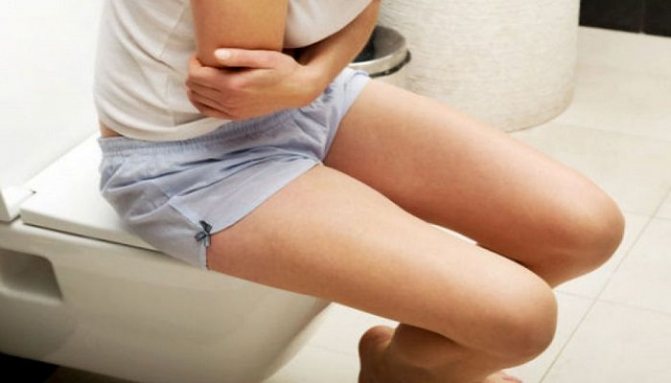
With hypertrophied secretion, pain is felt, most often immediately after food enters the sore stomach. They are often accompanied by a strong feeling of nausea. Patients also often note the appearance of heartburn.
An increased level of acid production affects the functioning of not only the stomach, but also other organs of the gastrointestinal tract. With this type of disease, constipation is often observed. Moreover, the patient may have stool very rarely - 1-2 times a week.
Advice! With constipation, feces remain in the body for too long and this leads to the release of toxic substances into the blood. This is reflected in the appearance of the skin, the skin becomes unhealthy and has an earthy tint.
If the stomach produces less digestive juices, then food is digested less well and is retained in the digestive tract, which results in a feeling of heaviness and pain. In addition, with this type of disease, digestive bacteria multiply, which causes extremely bad breath.

With low acidity, diarrhea is often observed, and this leads to the development of dehydration. Abnormal bowel movements are an alarming symptom, so you should not ignore it; you need to contact specialists who will offer to conduct a series of examinations.
What to do?
Having noticed a change in the color of feces, an adult should not ignore this fact.
Definitely worth it:
- Analyze the possible causes of changes in the color of feces.
- Look and think about whether there were other oddities in the body’s functioning (nausea, reluctance to eat, vomiting, fever, etc.).
- Change your diet if this may be the likely cause of the change in stool color.
- If possible, stop taking medications. And if not, consult with the current specialist who prescribed them about the appearance of yellow stool, it could just be a side effect.
- If no visible causes are found, it is worth getting diagnosed at the hospital.
- Submit feces for coprogram and bacterial culture.
- Do an ultrasound of the liver, gallbladder, and pancreas.
- Donate clinical blood and biochemical blood.
Video:
After diagnosis, if the results leave much to be desired, you should contact a specialized specialist - a gastroenterologist. Next, he will prescribe treatment based on the established diagnosis.
Starting treatment on your own is contraindicated. The only thing an adult can do is balance the diet, give up bad habits and take unnecessary, non-vital medications (laxatives, sorbents, etc.).
Yellow feces do not always immediately bother an adult, but this is until other symptoms of the pathology appear. And then it becomes impossible not to react to a strange sign.
You should definitely visit a doctor if:
- Abdominal pain of any nature appeared.
- The abdomen is abnormally soft or hard.
- Yellow feces are pinkish in some places, that is, they contain blood.
- There is a light state of feces and at the same time dark urine.
- The feces are loose, sandy, and eventually cease to be formed at all.
- Nausea appears, sometimes even to the point of vomiting.
- Vomiting appeared like a fountain, especially richly yellow in color.
- The temperature began to rise, slightly, but did not fall for a long time.
- Weakness occurs.
- No desire to eat food.
Seeing a doctor with such symptoms is simply a mandatory step, otherwise you can bring the disease to its peak and your health condition to critical. An experienced specialist will help you understand the reasons for the appearance of yellow stool in an adult and tell you what to do in each specific case.
Every person knows what color of stool is normal for him, and notices when the excrement takes on an unusual color. Light-colored stool, both in a child and an adult, can indicate diseases that cannot be ignored in order to avoid serious consequences. It is important to pay attention to the symptoms that accompany changes in stool color.
Treatment for the appearance of orange stool
Treatment for orange-colored stools should begin by contacting a gastroenterologist. He will prescribe several necessary examinations for you, with the help of which the cause of this phenomenon, the specific disease (if it exists), and the stage of its development will be identified. In addition, after the examination you can find out what complications may arise due to the disease. The examination process also includes analysis of feces for the number of red blood cells or white blood cells. If the final results differ from the standard range, then your healthcare professional will prescribe you a comprehensive treatment that can help you avoid stomach or intestinal problems in the future.
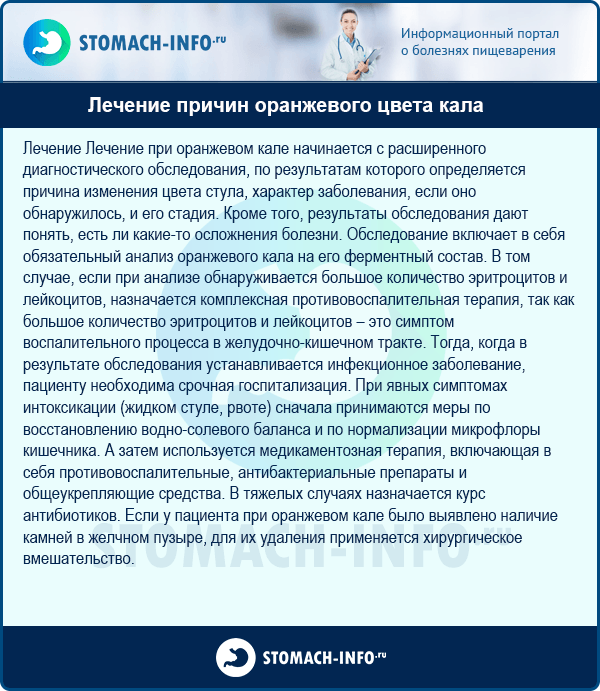
Treatment of the causes of orange stool
If, after the examination, you are diagnosed with an infectious disease, then urgent treatment is required at the clinic. If the disease has already developed strongly in the body, then it is first necessary to carry out restorative treatment, and then begin a course of taking pills, antibiotics, and so on. If it suddenly turns out that the cause of the appearance of orange-colored feces is gallstones, then in this case the intervention of a surgeon cannot be avoided. After removal of the gallbladder, read on our website.
Why is stool light in color: possible reasons
The stool of a healthy person consists of the remains of food consumed over the last 2-3 days. In normal condition, the color of feces varies from light brown to dark brown, the consistency is dense, there is no specific odor or foreign impurities. If you notice the appearance of unusually light-colored stools, you should not make hasty conclusions and panic. We need to identify possible causes. Changes in stool color are caused by:
- physiological processes;
- medications;
- various diseases.
In an adult
Discolored excrement in an adult is associated with eating large amounts of fatty foods. For example, sour cream or butter. At the same time, a change in the color of stool does not cause discomfort to a person. Review your diet, eliminate fatty foods and stick to it. After a few days, the stool returns to normal.
The lightening of feces is affected by taking medications. For example, antibiotics, antifungals, oral contraceptives. You should stop taking medications and contact your doctor to prescribe therapeutic measures. A great danger is a change in the color of the stool, accompanied by an increase in body temperature and pain of varying intensity in the abdominal area.
During pregnancy
The color of stool indicates the functioning of the liver and pancreas. During pregnancy, a woman's organs work under increased stress. Lightening of feces is associated with a pathological condition accompanied by a failure of the digestive process. The source of light-colored stool in pregnant women is dysbacteriosis or excessive use of multivitamin complexes. You should contact your doctor to prescribe the necessary treatment.
The stool is white or gray
When excrement becomes light in color, this is a sure sign of problems with the absorption of protein foods: potatoes, milk, rice. The stool becomes whitish due to taking medications: calcium, antacids. The patient should carefully examine the stomach and liver if the white color of the stool persists for a long time. Sometimes this happens with viral hepatitis or insufficient flow of bile into the duodenum. The usual color disappears due to the loss of stercobilin, a color pigment.
What else does white stool mean during gastritis? Do not rush to blame the stomach - the light shade may be associated with the pancreas. The secretion of enzymes fails, pancreatic juice is released unevenly. This leads to impaired protein breakdown and poor absorption by the body. All useful amino acids come out unchanged.
What disease can light-colored stool be a sign of?
Lightening of feces is caused by diseases that disrupt the normal functioning of the liver, pancreas and gastrointestinal tract. Try to evaluate how you feel. How has your health changed in recent days, weeks, months? Remember what illnesses you suffered in the recent past. If light-colored stool is associated with diseases, the following symptoms are often observed:
- general weakness;
- increased body temperature;
- stomach ache;
- yellow color of the skin and eye sclera;
- dark urine;
- nausea, vomiting;
- flatulence;
- loss of appetite and weight loss;
- unexplained increase in abdominal volume;
- skin rash.
If you notice an unusual change in the color of your feces, accompanied by a sharp deterioration in your health, immediately consult your doctor. He will give you a referral for tests, on the basis of which he will identify the cause of lightening of the stool and prescribe appropriate therapy. Ignoring your unsatisfactory condition is extremely dangerous; it can be a sign of serious diseases:
- . The development of inflammatory liver disease caused by toxic, infectious or alcohol poisoning is indicated by a tugging sensation, an upset stomach, and a yellow tint to the skin. Without treatment, the disease leads to cirrhosis of the liver.
- . Inflammation of the gallbladder is accompanied by acute abdominal pain, decreased appetite, increased body temperature, and nausea. Feces with cholecystitis have a liquid consistency, sometimes with remnants of undigested food.
- . Inflammation of the pancreas occurs as a result of poor diet, alcohol abuse, infectious diseases of internal organs and taking medications. The acute phase of pancreatitis is accompanied by cutting pain in the abdomen, vomiting, and diarrhea.
- Crohn's disease
. A chronic disorder of the digestive system, caused by allergic reactions, psychosomatic and infectious diseases, is manifested by lightening of stools, vomiting, increased body temperature, and the frequent appearance of blood in the feces. - . The development of malignant neoplasms on internal organs is asymptomatic. The first signs appear when the tumor reaches a certain size. Among the symptoms, doctors identify: pain in the abdominal cavity, constipation or diarrhea, vomiting, lack of appetite, and sudden weight loss.
Light brown stool
Human consumption of predominantly plant foods leads to lightening of feces. This is not a pathology and does not pose a risk to your health. With the accelerated passage of digestive masses through the colon, the stool becomes light brown in color. Introducing protein foods into the diet will normalize the functioning of the digestive tract.
Light green
Human feces acquire an unnatural hue due to excessive consumption of food dyes, which are found in large quantities in sweet water, alcoholic drinks, and sweets. Addiction to herbal preparations and dietary supplements leads to stools turning greenish. After giving up foods, the color of stool is restored within 3-5 days. In other cases, it is a symptom of diseases:
- Dysbacteriosis
. Violation of the intestinal microflora is accompanied by liquid feces with a specific putrefactive odor. - Acute enterocolitis
. Inflammation of the gastrointestinal tract in acute form is accompanied by diarrhea and vomiting. The stool has a green tint with traces of pus. - Infectious diseases of the gastrointestinal tract
are manifested by general weakness of a person, nausea, and increased body temperature. The stool turns light green and contains blood, pus, or mucus.
What diseases does yellow stool indicate?
What the appearance of yellow stool indicates can only be determined by a specialist after a thorough diagnosis. Mostly, such stool is a sign of deterioration in the functioning of the digestive system. With such pathologies, not only a change in the color of feces is observed, but also the development of certain symptoms.
Pancreatic dysfunction
The pancreas is an organ that performs two important functions in the human body. Firstly, it produces juice, without which the normal process of digesting foods entering the intestines is simply impossible. The second function of the organ is the production of hormones and regulation of metabolism in the human body. With minor disturbances in the functioning of the organ, the development of certain symptoms is noted.
Pale yellow stool with foam most often appears with the following diseases of the pancreas:
- pancreatitis;
- oncological diseases;
- pancreatic necrosis;
- cystic formations;
- cystic fibrosis.
Yellow feces with foam are a sign that the process of breaking down foods that have entered the intestines has been disrupted.
If you suspect any of these pathologies, before starting drug therapy, you should avoid eating too spicy, salty, fatty and smoked foods. The diet of patients with such diagnoses should be dominated by natural foods in the form of cereals, soups and boiled meat.
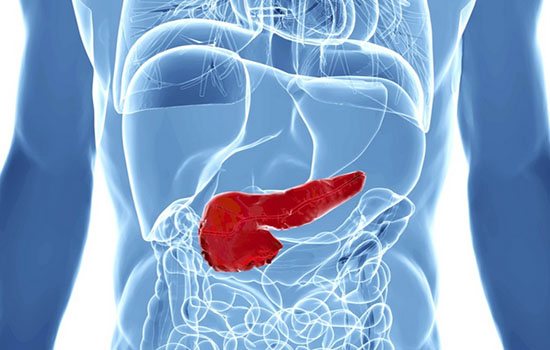
Unstable liver function
Feces can become yellow-white in color due to the formation of stones in the gallbladder and its ducts, cholecystitis. In addition, such a symptom can be observed when the pancreas presses on the bile duct and during rehabilitation after removal of the affected organ.
In such pathological conditions, the urine becomes dark and severe pain appears. It is especially noticeable after drinking alcoholic beverages and eating foods containing fat. The main location of severe pain most often becomes the area on the left under the ribs.
A common cause of the development of pathologies of the gallbladder and liver is failures in the production of the required amount of enzymes. Such a violation ends with problems arising with the absorption of beneficial elements entering the body with food.

Lesions of the gastrointestinal tract
One of the most common and dangerous intestinal infections is rotavirus infection, which provokes a change in the color of stool. Infection of the body occurs through airborne droplets and when a person eats various dairy products.
The symptoms of rotavirus infection are similar to those of the flu. The patient has a high body temperature, headaches and rhinitis. All manifestations are complemented by negative reactions from the digestive system in the form of diarrhea with pain in the abdominal area. With rotavirus infection, stool becomes a mushy consistency.
The presence of white specks in the stool may indicate the development of certain pathologies in the intestines:
- pathological process in the rectum;
- dead pinworms;
- candidiasis.
Another disorder of the intestines, in which stool is stained in an unusual color, is Crohn's disease. With this disease, ulcerative formations appear, due to which the feces turn gray-yellow and acquire a specific smell.

Giardia
The cause of the development of a disease such as giardiasis is Giardia, which multiplies in the digestive system. They enter the human body along with food, and such a pathology can be suspected based on the following signs:
- attacks of nausea, which are supplemented by vomit;
- headaches that occur during the day;
- stool disorder, that is, the stool becomes light yellow in color and emits a specific odor.
- Weight loss manifests itself in the loss of kilograms even when a sufficient amount of food enters the human body.
Such symptoms have many similarities with manifestations of other pathologies of the digestive system, so if they occur, you should definitely conduct a stool examination.
Other diseases
Patients should know what this means yellow stool, and under what pathologies such a symptom may appear. With a disease such as celiac disease, a lot of gluten accumulates in the body, which provokes enveloping of the intestinal walls. The resulting film disrupts the process of normal absorption of nutritional components and provokes the development of the following symptoms:
- problems with stool such as diarrhea or constipation;
- nausea without vomiting;
- constant weakness of the body;
- rashes of various types on the skin;
- flatulence;
- mild headache.

Gilbert's syndrome is an ailment that is inherited and manifests itself immediately after the birth of a child. Children experience bright yellow stool, and the main cause of the pathological condition lies in the increased level of bilirubin in the blood. A high content of such a substance causes various disturbances in the functioning of an organ such as the liver.
In addition to the bright color of the stool, the following symptoms may appear with Gilbert's syndrome:
- yellowing of the epidermis and sclera;
- change from loose stool to constipation;
- pain in the area of the right rib;
- decreased or complete lack of appetite.
There is a disturbance in the functioning of the nervous system, which manifests itself in constant insomnia, irritability and fatigue.
Among the rare causes that can cause staining of stool are:
- Deviations in the functioning of the thyroid gland. Mostly yellow feces are observed in diabetes mellitus and this is due to various complications that cause the disease. In some situations, the cause of diarrhea in this pathology is the use of certain groups of medications.
- Changes in hormone levels in women. Typically, this pathological condition develops in expectant mothers, during menopause or pathologies of the reproductive system.
Mental disorders are considered another provoking factor for changes in the color of stool. This symptom predominates in severe stress and acute neuroses, as well as in dangerous mental pathologies with pronounced manifestations.
Poisoning
The entry of pathogenic bacteria, plant poisons or chemicals into the body results in the development of severe intoxication. This pathological condition is accompanied by severe irritation of the digestive tract mucosa. The consequence of this is the accumulation of mucus on its surface, disrupting the normal absorption of fluid. The patient has yellow stool in the form of diarrhea, which is accompanied by foam and a foul odor.
